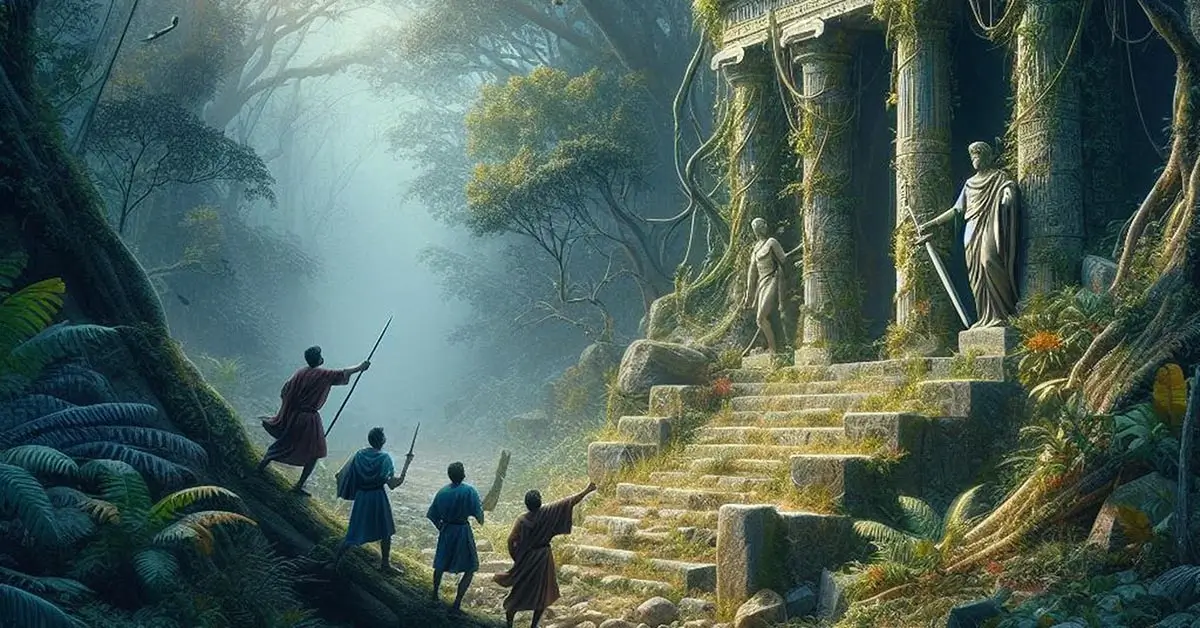This article is to briefly discuss the history of archaeology. Related topics are: background of archaeology, origin of archaeology, history of the development of archaeology, and emergence of archaeology. And also, this article will provide explanations for the questions: what is archaeology, and what do archaeologists do. And, this article will expand your understanding of archaeology.
Read the article>>How to understand archaeology by studying its history? How studying the history can help us understand something better?
Introduction to the History of Archaeology
The history of archaeology is not a single straight line in the timeline. It does not have an exact point of origin in time. Hence, it has not developed from a point in time to the present day. There have been multiple points in the past that caused its emergence. If the discipline we refer to as Archaeology today is a tree, the subfields of archaeology are the branches grown out of the trunk, and the history of archaeology is the root system that spreads into the earth below the trunk. Which means the discipline we have today did not happen to be built as a tree grown from a single root, but from a tree grown from a system of roots running from every direction. As of today, a variety of ideas, views, arguments, activities, methods, theories, and practises have nourished archaeology over a long period of time.
Hence, the origin of archaeology is not a single phenomenon. The origin of archaeology was a chain of phenomena, a process. It is a gradually emerging field of interest.
According to the nature of the chain of events, there are 4 phases in the history of archaeology.
- The background era of archaeology: The age of desire for revealing the past of mankind and monuments and material remains inherent from the past
- Archaeology in the Renaissance era: The age of first emergence as a developing Interest
- Archaeology in the 19th century AD: The age of first emergence as a scientific discipline
- Archaeology in the 20th century AD: The age of development as a discipline
The Background Era of Archaeology: The Age of Desire for Revealing the Past of Mankind and Monuments and Material Remains Inherent from the Past
The first age of the history of archaeology was the era when human beings first examined their own past. There seemed to be two reasons for Humans to be concerned about their past. One was curiosity about the past. The other was their curiosity for the variety of monuments and material remains they found in the environment, which were not created by themselves but, appealingly, were created by those who lived in the past. Legends, myths, and folk stories that were constructed about those monuments and material remains based on this curiosity were a significant characteristic of this era. The tendency to find out about those monuments that are ascribed to folk stories was higher among the elites in this era.
Read more about the background era of archaeology>>
Archaeology in the Renaissance Era: The Age of First Emergence of Archaeology as A Developing Interest
The second phase of the history of archaeology can be referred to as the Renaissance era in Europe during the 15th–18th centuries AD. The Renaissance of Sciences in Europe caused the development of both the passion to study the past and the methods followed to study the past. During this era, collecting antiquities as art (aesthetic value) and ancient crafts (historical value) escalated. Also, that caused the tendency to study the past to increase and the methods applied for studying the past to develop. The collections of antiquities relied on the randomly discovered material remains in Europe during the 15th century AD. The same happened with the material remains from both the Mediterranean and Eastern regions after the 15th century AD. The colonisation connected the rest of the world to the trend that was happening in Europe.
Read more about Archaeology in the Renaissance Era>>
Archaeology in the 19th century AD: The age of first emergence as a scientific discipline
In the 19th century, archaeology transformed as/into a discipline. The European Renaissance laid the foundation for that transformation in archaeology in the 19th century AD. Accordingly, the following trends and factors played major roles in transforming the field of interest in material remains inherent from the past into a discipline:
- the development of geology as a discipline
- the emergence of studies of human evolution
- the emergence of prehistoric archaeology
- the priority in studies for ancient civilizations
- the consequences of antiquarianism
- The development of systematic chronology in archaeology
- the contribution of Pitt Rivers, Flinders Petrie, and Mortimer Wheeler
Read more about archaeology in the 19th century>>
Archaeology in the 20th century AD: The Age of Development as a Discipline in the 20th century AD
The development of archaeology as a discipline in the 20th century marked a new chapter. At the end of the 19th century, archaeology emerged as a scientific discipline, and in the 20th century, its vast development occurred. And it occurred in three phases:
- the period before 1960,
- the period of New Archaeology after 1960 till 1980,
- the period of Post-Processual Archaeology after 1980.
The Period before 1960
During this period, the use of technology extensively developed archaeology as a science in practical ways, such as chemical dating methods. And also, new divisions, such as underwater archaeology and prehistoric archaeology, emerged within archaeology.
Read more about Underwater Archaeology>>
The Period of New Archaeology after 1960 till 1980
During these two decades, the theoretical evolution of archaeology took place. Rather than explaining the story behind antiquities, the past human cultural process was studied with the use of antiquities, marking the first origin of the form of archaeology we have today, which is ‘studying through material data’. And also, experts introduced archaeological heritage management to have standards for dealing with archaeologically important heritage.
Read more about New Archaeology>>
The Period of Post-Processual Archaeology after 1980
In and after the 1980s, with post-processual archaeology, the approach to archaeological studies changed. Earlier scholars used to neglect the cognitive aspect of mankind when recreating the past through material remains. They considered the environment to be the cause or force behind human evolution. Simply put, it said that human culture had changed due to environmental changes. But in post-processual archaeology, scholars argued that humans were the ultimate force behind cultural changes because they had intelligence. They emphasised that the past is not a pattern but a collection of various occurrences. Occurrences that happened at various times and in various places individually.
Read more about Post-Processual Archaeology>>
Read more about Archaeology in the 20th century>>
Summary
Archaeology, the field of study as we know it today, did not originate at a specific point in time. It has gradually emerged as a field of interest, then a field of study, then a scientific discipline. In the background era for the emergence of archaeology is where the enthusiasm for monuments and other material remains inherent from the past occurred. Then, in the Renaissance era, the curiosity for material remains from the past increased, and collecting them as art became a hobby. So, excavation spread over. Then, with the colonisation, looting of antiquities vastly spread. As a result, looters introduced new methods to do the looting better.
Then, in the 19th century, new discoveries were made in the field of study. And studying the past through material remains became the purpose of the field of interest. Experts in Archaeology introduced theories and methods for the discipline and adapted them from other disciplines. So, the development of other fields of interest into disciplines had a remarkable impact on archaeology, making it theoretically a science.
Then, in the first six decades of the 20th century, the use of technology extensively developed archaeology as a science in practical ways, such as chemical dating methods. Also, several important sub-fields, such as underwater archaeology, emerged.
Then, in the 1960s, the theoretical evolution of archaeology took place. The introduction of Cultural Heritage Management took place.
Then, in the 1980s, with post-processual archaeology, the approach to archaeological studies changed. Scholars, emphasised that the past is not a pattern but a collection of various occurrences. Occurrences that happened at various times and in various places individually.
So, this is the brief history of archaeology, the origin of archaeology, the emergence of archaeology, and the history of the development of archaeology. As of today, the archaeology we refer to is this post-processual archaeology. And the adaptation of post-processual archaeology according to regional differences in the world is currently happening. The term for that new trend is ‘decolonizing archaeology‘.
For a more comprehensive understanding, the four phases in the history of archaeology can be looked into in four separate articles.

